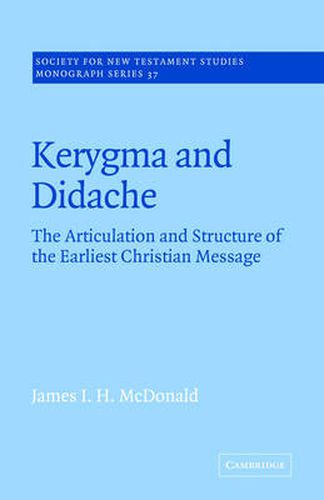Readings Newsletter
Become a Readings Member to make your shopping experience even easier.
Sign in or sign up for free!
You’re not far away from qualifying for FREE standard shipping within Australia
You’ve qualified for FREE standard shipping within Australia
The cart is loading…






Dr McDonald studies the fundamental structures and procedures of Christian communication, identified as propheteia (the prophetic), and paraclesis and homilia (the homiletic), paraenesis and catechesis (the catechetic), and paradosis (the transmission of tradition). He explores what lies behind each of them as well as the way they are used by Jesus and the early Church. Both kerygmatic and didactic features are found in all of these structures. This study is important in providing a corrective to inadequate or one-sided views of kerygma. Like other monographs in this series, it presents through cogent argument and well-organized evidence a thesis which will be of interest to all concerned with New Testament studies and with the transmission of the Christian faith.
$9.00 standard shipping within Australia
FREE standard shipping within Australia for orders over $100.00
Express & International shipping calculated at checkout
Dr McDonald studies the fundamental structures and procedures of Christian communication, identified as propheteia (the prophetic), and paraclesis and homilia (the homiletic), paraenesis and catechesis (the catechetic), and paradosis (the transmission of tradition). He explores what lies behind each of them as well as the way they are used by Jesus and the early Church. Both kerygmatic and didactic features are found in all of these structures. This study is important in providing a corrective to inadequate or one-sided views of kerygma. Like other monographs in this series, it presents through cogent argument and well-organized evidence a thesis which will be of interest to all concerned with New Testament studies and with the transmission of the Christian faith.